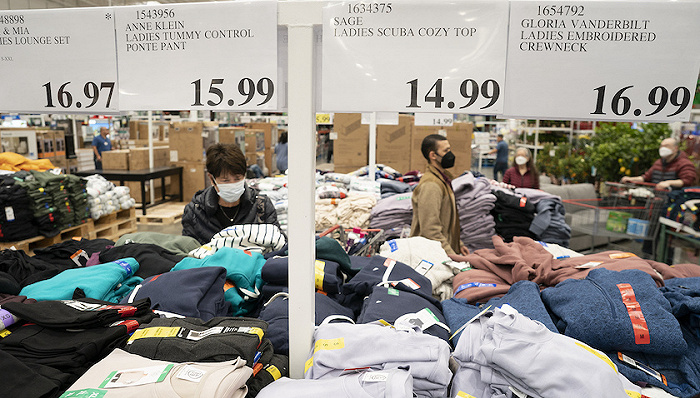U.S. inflation cooled sharply in June, raising fresh hopes that the Federal Reserve will soon end its most aggressive interest-rate increase in decades.

The U.S. Consumer price Index (CPI) fell 3 percent in June from a year earlier, according to data released by the Labor Department on Wednesday, well below the recent peak of 9.1 percent in June 2022 and down from 4 percent in May. The last time US inflation was close to 3% was in March 2021.
Still, inflation remains above the Fed’s 2% target. Fed members had indicated they would be able to raise interest rates again at their July 25-26 meeting, taking the benchmark rate to a 22-year high, given signs that recent economic activity has been stronger than expected. Wednesday’s inflation announcement is not expected to change that.
Last month, Fed officials left the target range for the federal funds rate unchanged at 5 percent to 5.25 percent. This is the first time they have raised interest rates since March 2022 after 10 consecutive hikes. The current rate increase cycle is also the most aggressive since 1982. A majority of Fed members at the meeting estimated that they would raise interest rates twice more this year.
Excluding volatile food and fuel prices, the CPI fell 4.8 per cent in June from a year earlier, the slowest pace since October 2021 and down from 5.3 per cent in May. Economists had estimated that the focus CPI would fall 5 per cent year on year.
Falling car prices, strong demand for labour-intensive services and an earlier surge in residential rental prices have contributed to persistently high levels of focus inflation.
George Mateyo, chief investment officer at Key Private Bank, said the latest report confirms that inflation is finally cooling, and that the Fed will see the data as confirmation that its strategy is countering the expected consequences: inflation has fallen, not stopped rising.
But policymakers tend to focus more on focus inflation than on headline inflation, believing that focus prices are a better purpose for guessing that inflation is not going away. Mateyo said the statement was unlikely to stop the central bank from raising interest rates again later this month.
On a month-on-month basis, the US CPI (seasonally consolidated) fell 0.2% in June, up from 0.1% previously. Focus CPI fell 0.2% month-on-month, the smallest monthly increase since August 2021, which means that underlying price pressures are gradually easing.
Specifically, power prices fell 0.6% month-on-month in June and 16.7% year-over-year. Food prices fell just 0.1 per cent month-on-month. Prices of used cars, the main source of soaring inflation in early 2022, fell 0.5% from the previous month.
Fed officials expect inflation to continue to fall, especially as housing costs fall. Housing costs account for about one-third of the weight of the CPI index. But the housing index fell 0.4% month-on-month and 7.8% year-over-year. According to the Bureau of Labor Statistics, this monthly increase accounted for about 70% of the CPI increase for the month.
Traders still expect the Fed to raise rates by 25 basis points at its July meeting, but they also think it could be the last.
After the CPI data was released, the Chicago Exchange’s interest rate watcher FedWatch showed that investors saw a 92.4 percent chance that the Fed would raise interest rates by 25 basis points at its July meeting, and a 75.8 percent chance that it would be the last such increase this year.
At the same time, slower inflation helped boost workers’ artificial earnings, with average inflation-adjusted hourly earnings falling 0.2% month-on-month and increasing 1.2% year-over-year. During the inflation surge, workers’ pay has lagged behind the increase in their lifetime costs.
The U.S. economy remains resilient this year, ignoring speculation of a downturn. Hiring slowed in June but remained strong, although consumer income cooled in May from the previous month. According to the Atlanta Fed’s latest estimate, GDP will grow at an annualised rate of 2.3% in the second quarter.
U.S. stocks fell across the board Wednesday, buoyed by Mongolian inflation data. The Dow Jones Industrial average was up 0.25% at 34,347.43. The S&P 500 fell 0.74% to 4,472.16; The tech-heavy Nasdaq index rose 1.15% to 13,918.96.
